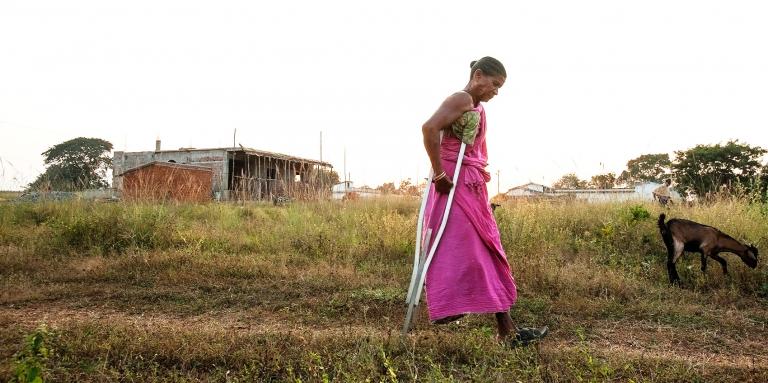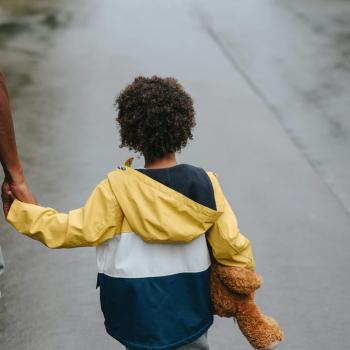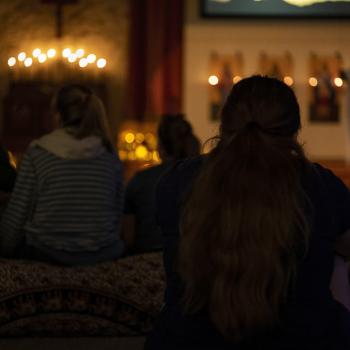WILLS POINT, TX – Gospel for Asia (GFA) Special Report (Part 1) – Discussing the misunderstandings and social stigma of leprosy that keep it alive, despite being a curable worldwide problem.
Leprosy. For many, a cloud of mystery, fear and shame surrounds this disease. It’s a disease that destroys nerves and deadens limbs to sensations of touch or pain, yet at the same time can trigger bouts of unbearable agony for the sufferer as infection exposes raw bones. It’s a disease that is difficult to contract, yet carries a stigma so strong that leprosy-affected people have been forced into isolation for centuries. Why is this disease so feared, and how can we help those who contract it?
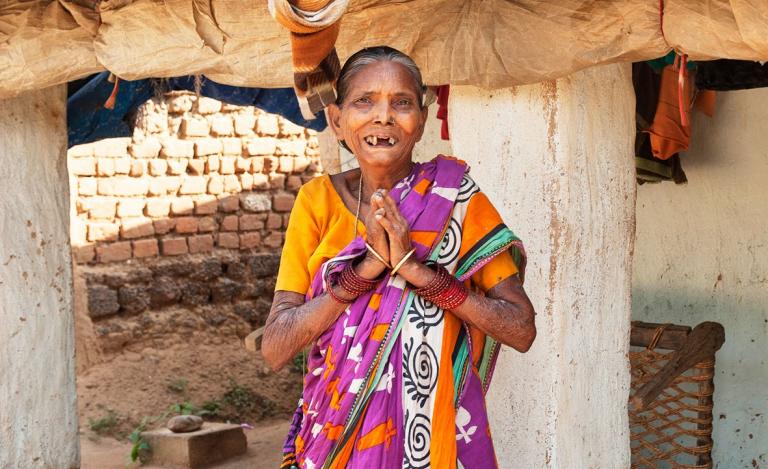
What is leprosy?
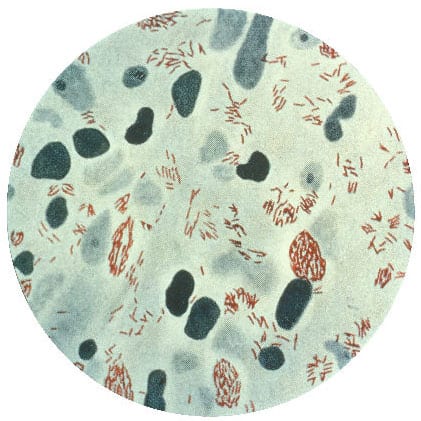
(Public Domain)
Leprosy, otherwise known as Hansen’s Disease, is an infectious disease caused by a bacteria called Mycobacterium leprae. This chronic nervous system disease “mainly affects the skin, the peripheral nerves, mucosal surfaces of the upper respiratory tract and the eyes,” according to the World Health Organization.
The first symptoms of leprosy are often eye damage, painless ulcers or patches of discolored skin with accompanying numbness in the affected area. Without intervention, leprosy may cause crippling of hands and feet, loss of limbs, tissue loss on the face and blindness.
The bacteria slowly attacks the nerves and will leave the one affected without the ability to detect pain. Their hands and feet will no longer notice the hot pot burning their palms, the sharp object penetrating their skin, or even a dislocated ankle as they go about their daily life. Wounds become infected, and tissue loss, degeneration or even amputation follows.
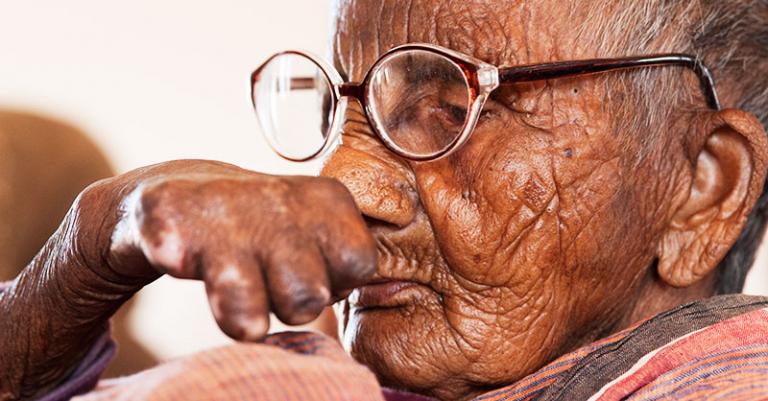
The physical disfigurement caused by leprosy creates a physical and emotional barrier between the individual and the rest of society, the United Nations explains.
Hansen’s Disease, as we know it, has mutilated lives for thousands of years. Reports of leprosy go back as far as 600 BC.
In the Old and New Testament, the Israelites received instructions from God to remove leprosy from among their camp; and later, Jesus Himself touches and heals many people afflicted with leprosy.
Are there any differences between modern-day leprosy and the mentions of leprosy in the Bible?
Answers in Genesis (AIG), an apologetics ministry that provides answers to many questions about the Bible and topics like creation and science, released an article about biblical leprosy. The article, condensed from The Genesis of Germs by Dr. Alan Gillen, states,
“Biblical leprosy is a broader term than the leprosy (Hansen’s Disease) that we know today. The Hebrew tsara’ath included a variety of ailments and is most frequently seen in Leviticus, where it referred primarily to uncleanness or imperfections according to biblical standards. A person with any scaly skin blemish was tsara’ath. The symbolism extended to rot or blemish on leather, the walls of a house, and woven cloth.”
It is likely that the man with a withered hand in Mark 3:1–5 suffered from the leprosy we are discussing today. Cultures around the world have recorded the devastating effects of Hansen’s Disease: disfigured noses and facial tissue, blind eyes, missing fingers or toes, and hearts rent in grief and anguish.
Intensifying the trauma of the disease is the weight of guilt many sufferers carry. Over the centuries, many have believed the disease is the result of some great sin of the victim. Instead of kindness or pity, the human being—whose world has just shattered—receives a cold shoulder; a fearful stare; an invitation to hit the road, move to a “leper colony” and leave the life they knew before.
Leprosy is Curable—But Still Feared
For hundreds of years, even medical professionals responded in fear of the infectious disease. Because of the misunderstandings and stigma associated with leprosy, very few people in history chose to study the bacterial infection. The few who did confront it now have millions of people benefiting from their courageous efforts.
In 1873, when people believed leprosy was the result of a curse or a judgement from the gods, Dr. A. Hansen, a physician from Norway, discovered that leprosy was caused by bacteria. He proved it was a contagious disease, like so many other plagues in our world. And when you find the cause of a disease, there is hope of finding a cure.
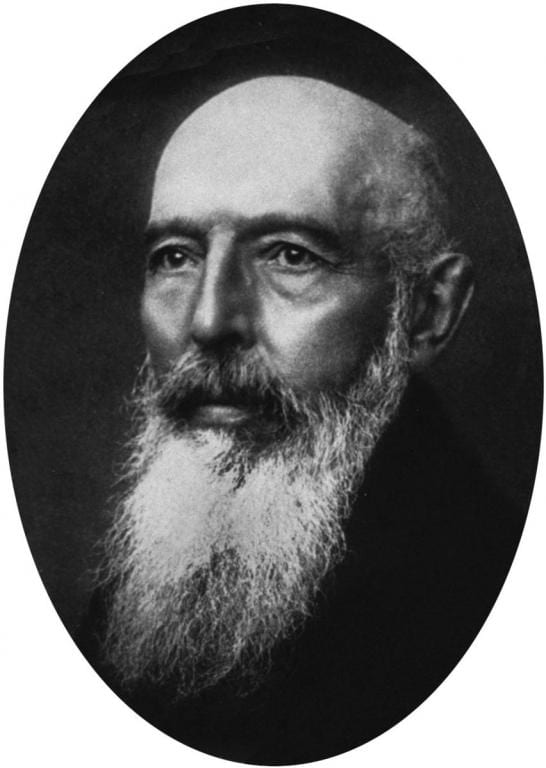
After that, a few remedies were found to treat leprosy patients, but the disease and its progression remained widely unknown and unexplored until the 1940s. At that time, new anti-leprosy drugs called sulfones were used to treat patients of Hansen’s Disease, but after the bacteria was eliminated from the person’s system, the disfigurement remained—and the discrimination.
In 1947, a world-renowned orthopedic surgeon working in India, Dr. Paul Brand, visited a leprosarium. Dr. Brand was appalled to uncover the lack of research performed regarding the physical deformation leprosy causes. In his book The Gift of Pain, coauthored with best-selling writer Philip Yancey, Dr. Brand records a conversation he had with a pioneer leprosy specialist, Dr. Bob Cochrane, at a leprosy sanitarium.

Dr. Brand learned from Dr. Cochrane that, although leprosy was crippling more people than polio or any other disease, few physicians had investigated the disease, and no orthopedist had researched leprosy and the disfigurement it produces. Most doctors at that time joined society in thinking leprosy was a curse from the gods, and as such, it was not a disease they paid attention to.
That conversation and many future encounters with leprosy patients spurred Dr. Brand to delve into the disease and to later become a leprosy specialist himself, establishing breakthrough techniques for correcting leprosy disfigurement.
Although most in the medical field steered clear of leprosy for hundreds and even thousands of years, some dedicated men and women throughout history have labored to understand leprosy. As a result, today leprosy is curable.
Over the decades following Dr. Hansen’s discovery in the 1870s, multiple treatments were used, but they achieved varied success and leprosy bacteria began developing an immunity to the sulfone drug therapy. Finally, in the 1980s, a multi-drug therapy (MDT) treatment successfully cured leprosy without the threat of bacteria developing an immunity, and WHO adopted it as the standard leprosy treatment.
With this powerful cure, multiple global leprosy-elimination strategies have been implemented and have made great strides in reducing new leprosy cases. With support from groups such as the Nippon Foundation, Novartis Foundation and others, MDT has been globally available since 1995—free of charge.
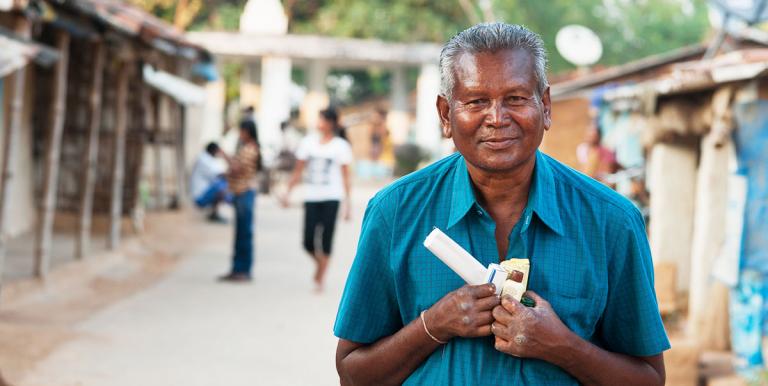
Yet in 2015, more than 200,000 people discovered they had leprosy—a disease that not only ravages the body but also tears families and communities apart.
Now that we have a cure for leprosy, why then, does this devastating disease still exist in our world?
Yohei Sasakawa, the WHO ambassador for leprosy elimination and the chairman of the Nippon Foundation, gives the answer to this question.
“A leprosy campaign can be likened to a motorcycle,” Sasakawa says.
“The front wheel is the medical cure, and the rear wheel is the elimination of stigma and discrimination. The motorcycle will not run smoothly unless the two wheels are balanced and moving at the same speed.”
It is the stigma and misunderstanding surrounding leprosy that causes the disease to still ravage lives today. Eliminating discrimination and false conceptions of leprosy is key to eliminating the disease itself.
Stigma Hindering Leprosy Prevention
Gospel for Asia’s field correspondents have interviewed many leprosy patients over the years. Each person’s account is unique, but there are common elements: shame or fear hindering them from seeking medical attention; believing treatment is too costly; and excommunication from family or friends when it becomes known they contracted leprosy. Even the children of leprosy patients are spurned from society.
Precious stories of faithful husbands standing by their leprosy-affected wives shine like beacons in a bleak sea of sorrowful testimonies.

When leprosy was discovered in Kishori’s body, her community endangered her marriage.
“Why are you keeping this sick person with you?” Kishori’s neighbors questioned her husband. “You can send her to her mother’s home.”
“How can I leave her?” he replied to his neighbors. “I love her.”
Kishori’s husband stood by her faithfully, never heeding their community’s call to abandon her because of her leprosy.
Stories like Kishori’s reveal the strength of ingrained stigma—but also how love can withstand those pressures. Sadly, more frequent are the stories of men and women abandoned by their spouses, in-laws, or even kicked out of their homes by their children.
“Women are particularly vulnerable to the myths and stigma associated with leprosy and suffer higher social costs of leprosy owing to fewer options open to them,” sites The World Bank in a document for India’s Second National Leprosy Elimination Project.
The report adds that, although women comprise 25 percent of leprosy patients, because of strong cultural protocol traditions regarding interactions between men and women “it is more difficult for the service providers and public health information campaigns to reach them.”
Once on their own, men, women and even children of all ages often gather together in leprosy colonies. There, at least, they are understood by their neighbors who suffer from the same affliction. In these leprosy colonies, governments often organize relief and medical work for patients. Yet many find the monthly ration too meager to live on, and they must do whatever they can to keep themselves and any family members with them alive.

Here again, stigma bars their way. Dr. Brand shares in The Gift of Pain the story of Sadan, a leprosy patient whom his wife met. Leprosy had first appeared on Sadan’s body when he was only 8 years old. The stigma of his disease meant he was expelled from school and isolated from society. The child’s friends avoided him, even crossing the street to keep from encountering Sadan.
Finally, when he was 16 years old, Sadan managed to attend a mission school, but his education couldn’t cover up his disease. Employers turned him down, and restaurants and stores would have nothing to do with him. Even public transportation was denied him.
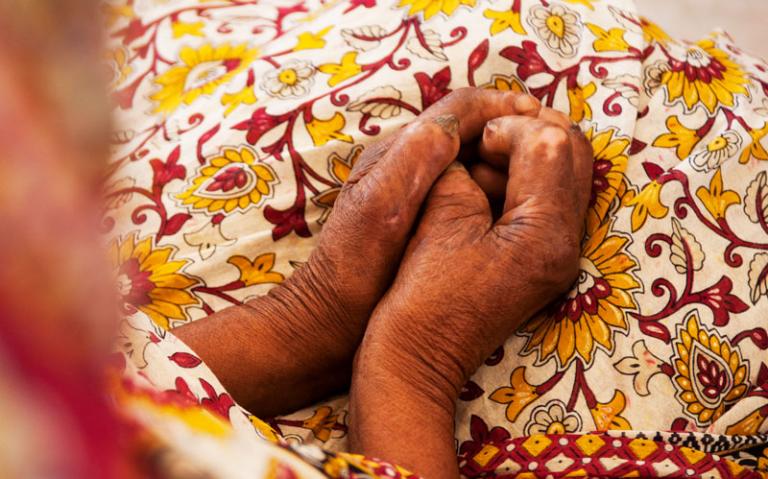
Many unheard stories follow a pattern similar to Sadan’s. The jobs available to leprosy patients are few, and their damaged hands and feet limit them even more. Some may be able to open shops within their colony—few patients dare to venture out to public markets for fear of disturbing other customers or shop owners with their presence—while others turn to begging, utilizing the very deformities that trapped them in such desperation.
Pervasive fear of catching leprosy permeates the minds of those around leprosy patients, but the reality is that 95 percent of people are naturally immune to leprosy.
Only those who lack this inborn immunity can contract the disease. Research has made great strides in learning about leprosy, but how leprosy is transmitted from person to person is still largely unknown. Those who develop leprosy are typically people who have been closely exposed to Hansen’s Disease for an extended period of time, such as children—who appear to be especially vulnerable.
As stated before, leprosy is curable; but too few people know this life-changing fact. Believing there is nothing to be done or that treatment is too expensive to obtain, those who could be cured of their disease hide in secret, waiting for the “unavoidable” day when sores and disfigurement announce them as “lepers.”
Yet with even one dose of MDT, leprosy patients are no longer contagious, according to American Leprosy Missions. Depending on which of the types of leprosy they contracted, they can be cured with six to twelve months of proper treatment.
The key is catching leprosy early enough to avoid the debilitation of leprosy as it runs its course—and to prevent the patient from transmitting it to anyone else.
“The problem with leprosy [elimination],” says a Gospel for Asia (GFA)-supported worker involved in leprosy ministry,
“is [that] young people, when they identify or when they come to know that they are affected with leprosy, they hide, because there is a fear that if they disclose [their disease] they will be sent out from their families and they will be sent out from their villages. That happened in the past, and it happens even today.”
Dr. Poonam Khetrapal Singh, WHO regional director for South-East Asia, confirms the self-perpetuating effect of stigma, not just among youths but of people of all ages, saying, “As long as leprosy transmission and associated disabilities exist, so will stigma and discrimination and vice-versa.”
Yet beyond the fear of rejection, there is another force at play hindering patients from seeking help: an unwarranted sense of guilt.
Leprosy: Misunderstandings and Stigma Keep it Alive: Part 2 | Part 3
This Special Report article originally appeared on gfa.org
To read more on the experience of leprosy patients on Patheos, go here.
Click here, to read more blogs on Patheos from Gospel for Asia.
Go here to know more about Gospel for Asia: Radio | About | Integrity | Facebook | Lawsuit


